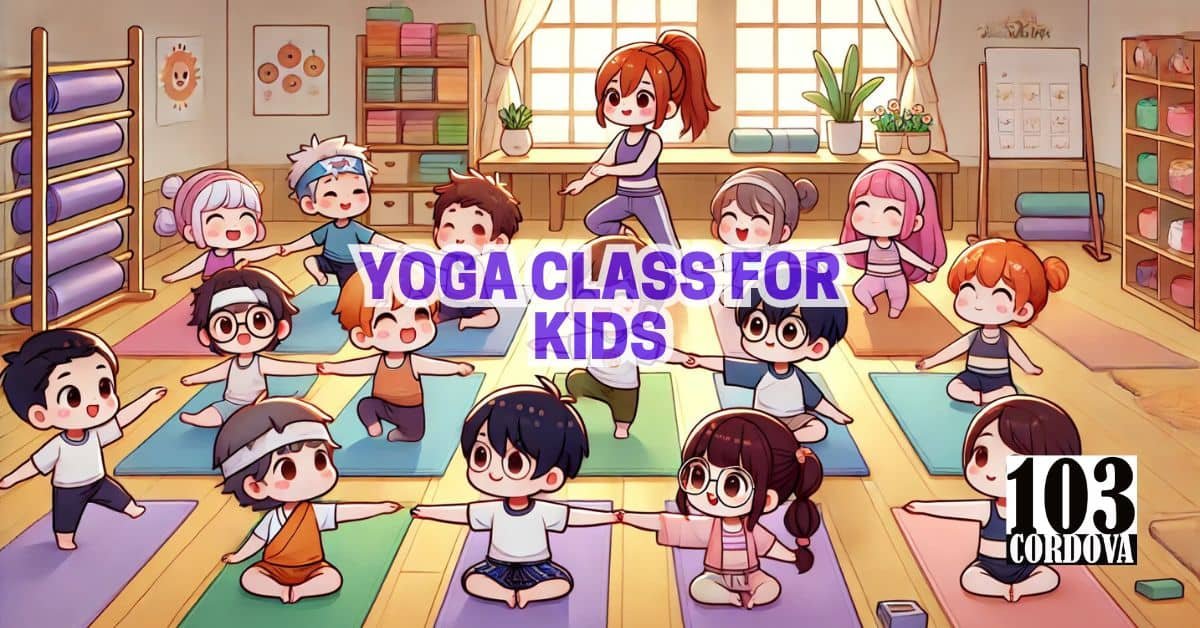A yoga class for kids offers much more than physical fitness; it can be an essential tool for social and emotional growth.
These classes encourage children to develop mindfulness and awareness of their bodies, but they also create opportunities for learning important social skills.
By participating in a group setting, kids gain exposure to cooperation, communication, and empathy.
The structure of a yoga class provides a balanced combination of individual focus and group interaction.
This mix allows children to form connections with others while working on self-regulation and emotional control.
1. Fostering a Sense of Community in Yoga Classes
Yoga classes help kids feel like part of a larger community by encouraging shared experiences.
The group practice involves activities where children can connect, such as practicing poses together or supporting one another during challenging sequences.
Instructors often foster this community spirit by encouraging respect and compassion among participants.
This feeling of belonging is essential for children’s social development, as it helps them understand the value of being part of a group.
A strong sense of community creates a safe space where children can be themselves and trust those around them.
🧘 Why Joining a Yoga Class for Seniors in Marikina is a Game-Changer for Community!
2. Promoting Teamwork Through Cooperative Activities
Many yoga classes incorporate partner poses and group activities that require kids to cooperate to achieve a common goal.
These exercises, such as balancing poses or moving through synchronized sequences, teach children how to rely on each other.
When kids work together in yoga, they build problem-solving skills and learn the importance of collaboration.
The process of achieving a pose or completing an activity as a team helps them understand that collective effort often brings better results.
These teamwork skills are transferable to other areas of their social lives, like school projects or playtime.
🧘 Finding Your Perfect Match: Tips for Choosing the Right Yoga Class for Seniors
3. Encouraging Communication Skills in Kids
Yoga provides a setting where children can practice both verbal and non-verbal communication.
Instructors often engage children by asking questions or encouraging them to express how they feel after completing a pose.
This back-and-forth communication helps kids become more comfortable articulating their thoughts and feelings.
Additionally, non-verbal cues, like gestures or facial expressions, become part of the communication process as children mirror each other’s movements or respond to the teacher’s guidance.
Learning to communicate effectively during a yoga class strengthens their ability to engage socially in other settings.
🧘 Yoga and Metabolism: Is It Aerobic or Anaerobic? Unpacking the Science Behind Your Practice
4. Building Empathy Through Shared Yoga Experiences
Yoga creates shared experiences that help kids build empathy toward one another.
When children face similar challenges, such as mastering difficult poses or practicing stillness in mindfulness exercises, they learn to understand the feelings of their peers.
These shared experiences foster a deeper connection as kids begin to see the world from someone else’s perspective.
Instructors often encourage students to support each other, offering kind words or gentle assistance during partner exercises.
This sense of understanding and support helps children develop empathy, an essential skill for forming strong friendships and positive social interactions.
🧘 Yoga vs. Traditional Workouts: Is It Aerobic or Anaerobic Exercise?
5. Developing Active Listening Skills in a Class Setting
Yoga classes emphasize the importance of active listening, as children must pay close attention to the instructor’s guidance.
Following detailed instructions on how to move through poses or practice breathing exercises helps kids develop the ability to focus and listen attentively.
Beyond the teacher-student dynamic, kids also learn to listen to each other during group discussions or partner activities.
Active listening in a yoga setting teaches children patience and the value of fully understanding what someone else is communicating.
This skill strengthens their ability to be thoughtful and engaged in conversations with peers, improving their social connections.
🧘 Power Yoga Unleashed: Aerobic or Anaerobic? Exploring Its Impact on Your Health
6. Managing Emotions with Mindfulness Techniques
Mindfulness is a key element of yoga that teaches children how to manage their emotions in healthy ways.
Breathing exercises, meditation, and body awareness techniques help kids become more in tune with their feelings.
As they practice mindfulness, they learn to recognize emotions like frustration or anxiety and respond calmly rather than reacting impulsively.
This ability to regulate their emotional responses allows children to navigate social interactions more effectively, reducing conflicts and enhancing cooperation.
In time, practicing mindfulness helps kids maintain better control of their emotions in a variety of settings, including group activities and friendships.
🧘 Hot Yoga Exposed: Aerobic or Anaerobic? Discover How It Affects Your Body!
7. Creating Opportunities for Interaction Among Peers
Yoga classes offer structured moments where kids can interact with their peers in meaningful ways.
Group exercises, partner poses, and collaborative discussions provide opportunities for children to engage with each other in a supportive environment.
These interactions help kids practice social skills like sharing, taking turns, and offering encouragement.
The relaxed atmosphere of a yoga class allows children to connect without the pressure or competitiveness that may come with other group activities.
Through these regular interactions, kids become more comfortable forming connections and building friendships with their classmates.
🧘 Unlocking the Benefits: What Does Yoga Really Help With? Transform Your Life with Mindfulness
8. Enhancing Confidence Through Mastering Yoga Poses
As children learn and improve their yoga poses, their confidence naturally grows.
Mastering a challenging pose after consistent practice gives kids a sense of accomplishment, boosting their self-esteem.
This newfound confidence extends beyond yoga, as children feel more comfortable trying new things and engaging with others socially.
Instructors often praise effort and progress, reinforcing the idea that success comes from perseverance.
With increased confidence, children are more likely to take social risks, such as making new friends or participating in group activities.
🧘 First Time at Yoga? Here’s How to Prepare for Your Beginner Class in Marikina!
9. Encouraging Inclusivity and Acceptance in Classes
Yoga classes are designed to be inclusive, welcoming children of all abilities and backgrounds.
Instructors emphasize the importance of acceptance, teaching kids that everyone’s yoga practice is unique and valuable.
This inclusive environment fosters a sense of belonging, where children learn to appreciate differences rather than judge them.
By practicing yoga in a space that encourages diversity and mutual respect, kids develop a mindset of inclusivity that they carry into other social situations.
Acceptance becomes a foundation for building meaningful, diverse friendships.
🧘 The Author of the Yoga Sutras: A Journey into the History of This Influential Text
10. The Formation of Long-Lasting Friendships in Yoga
The consistent interaction and shared experiences in yoga classes often lead to long-lasting friendships.
Children bond over their progress, encourage each other during challenging poses, and share moments of mindfulness and calm.
These positive experiences create deep connections that can endure outside of the class.
Friendships formed in yoga are often built on mutual support, trust, and shared goals, making them strong and meaningful.
As kids grow and continue their yoga practice together, these bonds often become an integral part of their social lives.
🧘 The Origins of Yoga: When Was This Ancient Practice Born? Tracing Its Roots
💡 Conclusion
A yoga class for kids offers a unique environment where social skills and friendships can flourish.
Through teamwork, communication, empathy, and mindfulness, children learn how to engage with others in positive and meaningful ways.
The non-competitive, inclusive nature of yoga encourages kids to be open, kind, and supportive of their peers.
Over time, these experiences foster strong friendships and improve children’s ability to connect with others.
Yoga, therefore, not only benefits physical well-being but also plays a vital role in enhancing social development.
🧘 Our Services
Looking for a welcoming space to practice yoga for all ages?
Visit us at 103 Cordova Tower, Marquinton Residences, Sto. Nino, Marikina City, where we offer classes tailored to suit kids, teens, adults, and seniors.
Our experienced instructors guide you through mindful practices that promote physical health and emotional well-being.
Reach us by phone at 09176225780 or connect with us via Facebook and our website’s contact form for more details.
Join our community today and experience the benefits of yoga in a supportive and inclusive environment!

